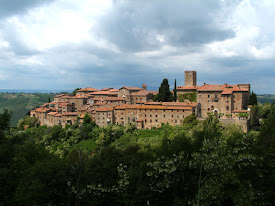Gianni Morandi – actor and pop singer
Veteran entertainer has sold 50 million records
The singer Gianni Morandi, a Sanremo Festival winner and Eurovision Song Contest contestant who has sold more than 50 million records and had a simultaneous career as a successful TV and film actor, was born on this day in 1944 in a mountain village in Emilia-Romagna. Morandi, whose longevity has brought comparisons with the British singer Sir Cliff Richard, is still performing today in his 70s. In fact, he had an unlikely hit in 2017 when he teamed up with 23-year-old rapper and web star Fabio Rovazzi. Morandi, whose pop-ballad style still has a big following, showed his versatility and willingness to indulge in self-mocking humour this year by co-starring with Rovazzi in an electro-pop track and video called Volare that went to No 1 on iTunes Italy and attracted 2.5 million views in less than 24 hours. He has also appeared in his 11th TV drama series, having a few months earlier seen the release of his 18th movie. Morandi was born in Monghidoro, now a village of almost 4,000 people that sits on a ridge in the Tuscan-Emilian Apennines some 840m (2,750ft) above sea level, about 41km (25 miles) south of Bologna. Read more...
__________________________________________________________
Carlo Ponti – film producer
The man who married Sophia Loren twice
Carlo Ponti, the producer of many iconic Italian films, was born on this day in 1912 in Magenta near Milan. He studied law at Milan University and, after joining his father’s law firm in Milan, became involved in the film business through negotiating contracts. His production of Mario Soldati’s Piccolo Mondo Antico about the Italian struggle against the Austrian occupation was his first success in 1940. But he was briefly jailed for allegedly undermining relations with Nazi Germany. He went on to produce many of the popular and financially successful films of the 1960s and 1970s, such as Vittorio de Sica's Marriage Italian Style, David Lean’s Doctor Zhivago and Michelangelo Antonioni’s Blowup. But Ponti also became famous for his love affair and two marriages to the film star Sophia Loren, who was born Sofia Villani Scicolone in Pozzuoli near Naples. Ponti met her while he was judging a beauty contest in which she was competing, was captivated by her looks, and subsequently turned her into a film star and changed her name. He was already married but he obtained a Mexican divorce in order to marry Sophia, who was more than 20 years younger than him, as divorce was then forbidden in Italy. Read more…
__________________________________________________________
Fabrizio Ravanelli - footballer
Juventus star who became a favourite at Middlesbrough
The footballer Fabrizio Ravanelli, who won five trophies with Juventus between 1992 and 1996 before stunning the football world by joining unfashionable Middlesbrough in the English Premier League, was born on this day in 1968 in Perugia. Playing alongside Gianluca Vialli and Alessandro Del Piero in the Juventus forward line, Ravanelli scored in the 1996 Champions League final as the Turin side beat Ajax in Rome before signing for Middlesbrough just six weeks later. The ambitious club from the northeast of England paid £7 million (€8.5m) for Ravanelli, a club record fee and at the time the third largest sum paid for any player by an English club. It was part of a huge spending spree by Middlesbrough, managed by former England captain Bryan Robson, that brought a string of high-profile signings to the club's Riverside Stadium including the Brazilian playmaker Juninho and England international Nick Barmby and another Italian, the Inter defender Gianluca Festa. Ravanelli made an immediate impact, scoring a hat-trick on his Premier League debut against Liverpool, and ended the season with 31 goals in league and cup matches. Read more…
___________________________________________________________
Pope Leo X
Renaissance pope supported art but did not foresee the Reformation
Pope Leo X was born as Giovanni de' Medici, on this day in 1475 in Florence. The second son of Lorenzo de' Medici - Lorenzo Il Magnifico - who ruled the Florentine Republic, Leo X has gone down in history as one of the leading Renaissance popes, who made Rome a cultural centre during his papacy. He is also remembered for failing to take the Reformation seriously enough and for excommunicating Martin Luther. Giovanni was always destined for a religious life and received a good education at his father’s court, where one of his tutors was the philosopher Pico della Mirandolo. Giovanni went on to study theology and canon law at the University of Pisa. In 1492 he became a member of the Sacred College of Cardinals, but after his father died later that year, he returned to Florence to live with his older brother, Piero. He was exiled from Florence in 1494 with the rest of his family, accused of betraying the Florentine republic, and spent the next six years travelling throughout northern Europe. On his return to Italy in 1500 he settled in Rome and on the death of his brother, Piero, he became the head of the Medici family. Read more…
































